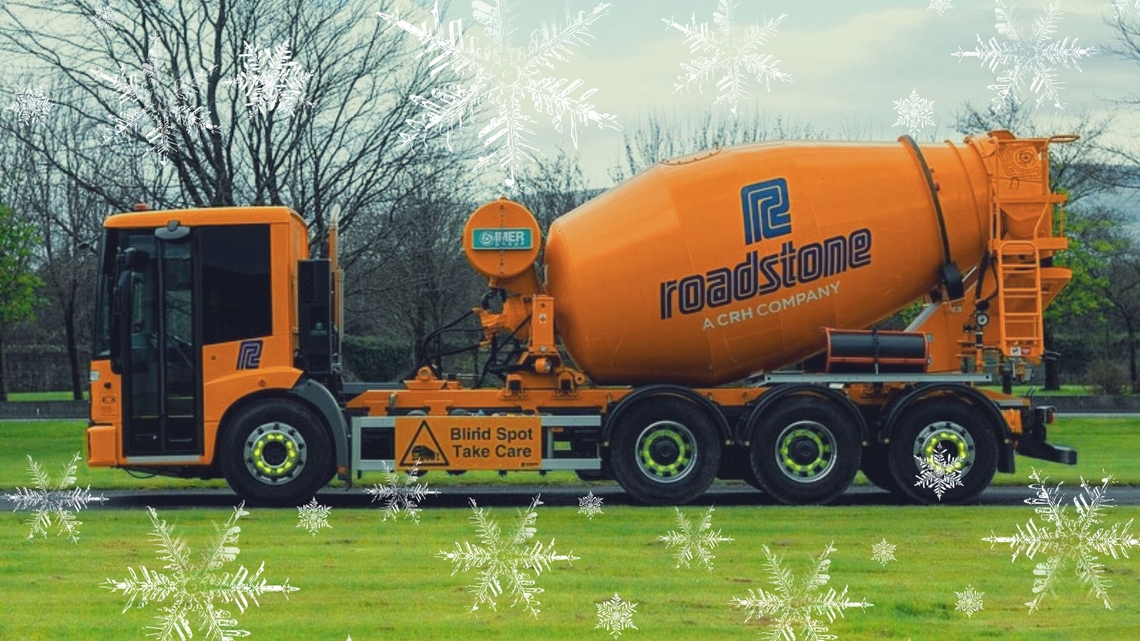
During extremely cold weather concrete (particularly fresh and early age concrete) can be severely damaged by
frost and ice. When fresh concrete cools below 0ºC the water in the mix freezes and expands which causes cracking
internally and blistering of the surface. Mature concrete that is saturated can also be seriously affected by low
temperatures.
Certain precautions can be taken to minimise and possibly prevent frost damage to concrete and the following
advice whilst not exhaustive will help protect concrete against frost damage.
Further guidance can also be got from the Irish Concrete Federations publication “Guidelines for Concreting in Cold Weather” available on www.irishconcrete.ie
Effects of cold weather on unprotected concrete
- If there is a risk of frost at night it is essential to protect fresh concrete from freezing.
- Fresh concrete strength must reach 5N/mm2 to avoid the effects of frost damage.
- Concrete temperature must be kept at or above 5ºC for the first 48 hours to achieve this.
- Low temperatures will slow down concrete strength development for several weeks.
- Strength development is further reduced during cold weather if GGBS or PFA is used.
- Striking times of formwork must be extended during periods of cold weather.
- External slabs, yards and driveways are particularly vulnerable because they have a large surface area and
thin section which allows heat to escape rapidly. Particular precautions must be taken to prevent frost
damage to these areas. - While it is common practice to apply de-icing agents such as salt on concrete surfaces to clear ice and
snow during winter, these in themselves can damage the concrete surface that they are applied to. - Ammonia based de-icing agents are particularly aggressive and should not be used as they can severely
damage concrete surfaces.
Precautions to be taken when concreting in cold weather
- Specifications recommend that concreting should not start when the air temperature is 5ºC and falling
and should only begin when the temperature is at 3ºC and rising. - Fresh concrete should never be placed on or against frozen ground.
- Reinforcing bars and shuttering must be free of ice and snow. Cover and insulate the concrete where
possible. - If concrete has to be placed it should be organised so that it is done as quickly as possible.
- Frost blankets should be used to provide insulation and protection for exposed concrete surfaces.
- Wind breaks will reduce wind chill and evaporation and help lower heat loss especially from slabs.
- Heaters may be necessary to provide continuous heating to the concrete to maintain heat.
- Increasing the cement content or grade of concrete will generate more heat in the concrete; consider the
use of air entrainment, polypropylene fibres or accelerator. - The Irish Standard for Concrete : IS EN 206, recommends using C30/37 (37N) air entrained or C40/50 (50N)
concrete where wet horizontal surfaces are exposed to significant freeze/thaw cycles.